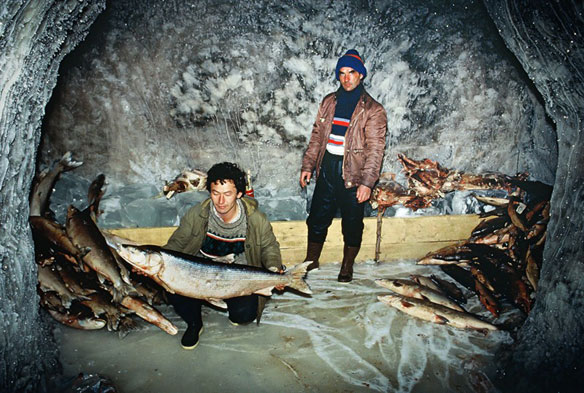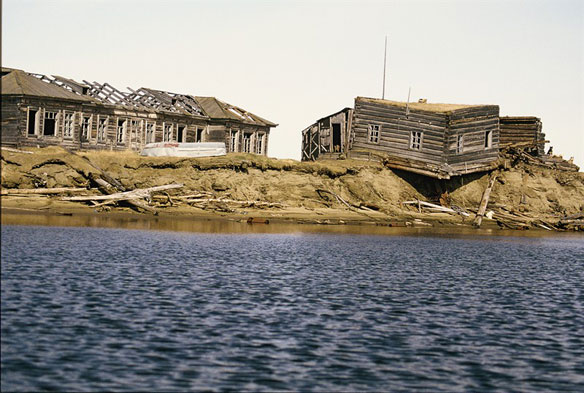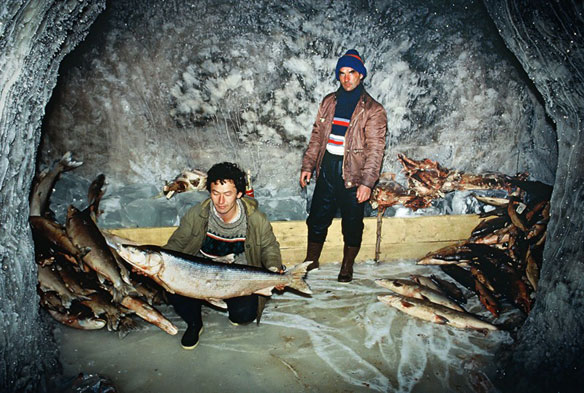
Ice fishermen in a permafrost cave, Siberia. Soil in the far Northern permafrost can be frozen several hundred meters deep. Permafrost soil has a constant year-round temperature of 0 degrees or lower and forms a solid foundation for building upon. Some permafrost caves were traditionally used as storage space for food during Summer. The arctic seabed in Siberia houses a large deposit of CO2 in the form of compacted Gas Hydrates. Increasingly subjected to warming, Siberia’s shallow shelf areas are melting, giving up greater amounts of methane than previously recorded, and softening the previously stable ground above. Captions and Photo source: ©© Peter Prokosch / UNEP
Excerpts;
A study shows that more than a trillion tonnes of the greenhouse gases CO2 and methane could be released into the atmosphere as a result. An international team has published details in the journal Science. The evidence comes from analysis of stalactites and stalagmites in caves along the “permafrost frontier”…
Original Study: “Speleothems Reveal 500,000-Year History of Siberian Permafrost,” Journal Science

Remnants of a village and former Stalin camp, Siberia. Permafrost is a layer of earth that remains frozen solid throughout the entire year. Recent observations show that permafrost temperatures have increased during the last 20-30 years in almost all areas of the Northern Hemisphere, softening the earth. In the Arctic, this is affecting landscape stability, causing landslides, erosion and significant damage to airport runways, houses and infrastructure of Arctic communities. Captions and Photo source: ©© Peter Prokosch / UNEP









